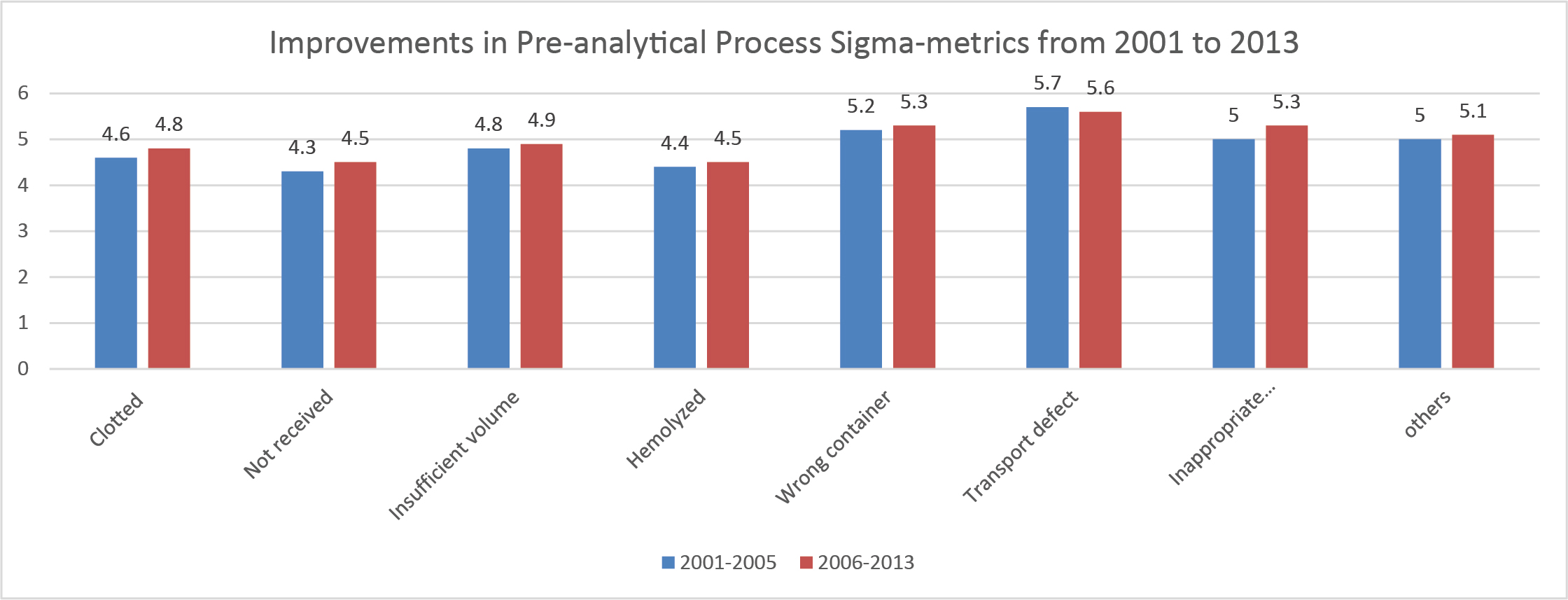Basic QC Practices
Evidence of Improving Pre-Analytical Quality
A recent paper details the efforts of monitoring pre-analytical processes over 12 years. Have laboratories improved in their pre-analytical performance since 2001?
Evidence of Improvements in Pre-Analytical Quality
Sten Westgard, MS
June 2017
The common wisdom is that most of errors in the laboratory occur in the pre-analytical phase. That's often asserted, but rarely proved - typically the same papers that make the assertion fail to calculate the real analytical performance of the method. Nevertheless, the emphasis on the pre-analytical phase has been paramount in laboratory medicine. In 2001 through 2005, there were less than 200 citations of pre-analytical processes. In 2006 through 2013, that number nearly tripled, to more than 700 citations. Now, in just the three years from 2014 to 2017, we're closing in on nearly 1,000 citations. We are evidently in the ear of "Peak Pre-analytical."
So if we're closing in on 2,000 citations of pre-analytical studies since the turn of the century, has all this attention generated any action? Even more importantly, have we made significant improvements because of these efforts? At least one paper has tried to figure that out:
Llopis, MA, Bauca JM, Bara N et al. Spanish Preanalytical Quality Monitoring Program (SEQC), an overview of 12 years experience, Clin Chem Lab Med. 2017 Mar 1;55(4):530-538
This study focused on the sample collection, handling and transport, and looked at the performance in the years from 2001 through 2005, then 2006 through 2013.

The improvements the study reports are dramatic when it comes to the defect rate, with some reductions in defects as high as 60%. But when the performance is already pretty good, such as the 5.0 Sigma for inappropriate sample/anticoagulation ratio, even a 60% reduction will only boost the Sigma to 5.0.
Around the turn of the century, laboratories were just starting to benchmark these processes, and dramatic improvements were made in those early years. Now, unfortunately, we seem to be hitting a ceiling. You can see with transport defects, the Sigma actually got slightly worse (from 5.7 to 5.6). If we're trying to reach Six Sigma, we'll need more than gradual improvements. We're going to have to redesign some of our processes from the ground up.
Overall, there's a huge amount of good news here for laboratories. Most of the pre-analytical processes are at least at 4 Sigma, which is good, and many are at 5 Sigma, which is excellent. In fact, we may have reached a stage where the big problems for laboratories aren't on the pre-analytical side any more. They may be on the analytical side, where it's still common to find tests performing below 3 sigma!
